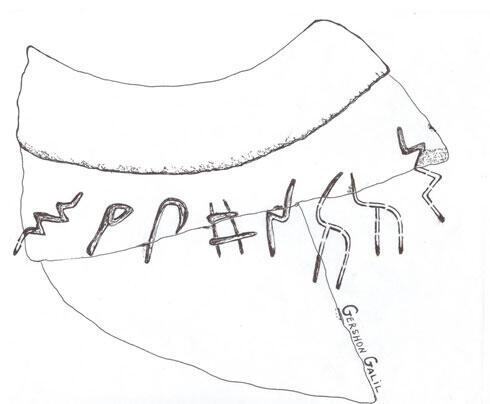An inscription on a 3,000-year-old artifact, a clay jug, discovered in July has now been deemed the oldest and most ancient engraving to ever be unearthed in Jerusalem.
Eilat Mazar of Hebrew University, the archaeologist leading the dig that found the artifact, had believed the inscription named the owner of the jug, or perhaps what its contents were, and that it was the work of a Canaanite tripe that lived in Jerusalem during the time of King David.
Now, an Israeli researcher from the University of Haifa, Professor Gershon Galil, has confirmed that some of Mazar's suspicions were correct.
Unlike Mazar's initial description, the clay jug actually dates back to the time of King Solomon, and while it may not have implied who its owner was, its inscription does, according to Galil, refer to its contents.
Galil believes that the engraving on the jug refers to the type of wine that would be stored inside it. Publishing his findings in the New Studies on Jerusalem journal, Galil argues that the middle portion of the eight-letter inscription refers to the type of wine – an inexpensive, lackluster wine that would be bestowed to King Solomon's servants and laborers – while the first letter represents the date, with the last letter depicting the region from which the wine hails.
Galil also writes that the engraving was made during the tenth century BCE, following King Solomon's building of the First Temple.
"This wine was not served on the table of King Solomon nor in the Temple," Galil wrote. "Rather it was probably used by the many forced laborers in the building projects and the soldiers that guarded them. Food and drinks for these laborers were mainly held in the Ophel area.
"Scribes that could write administrative texts could also write literary and historiographic texts, and this has very important implications for the study of the Bible and understanding the history of Israel in the biblical period," he added.


